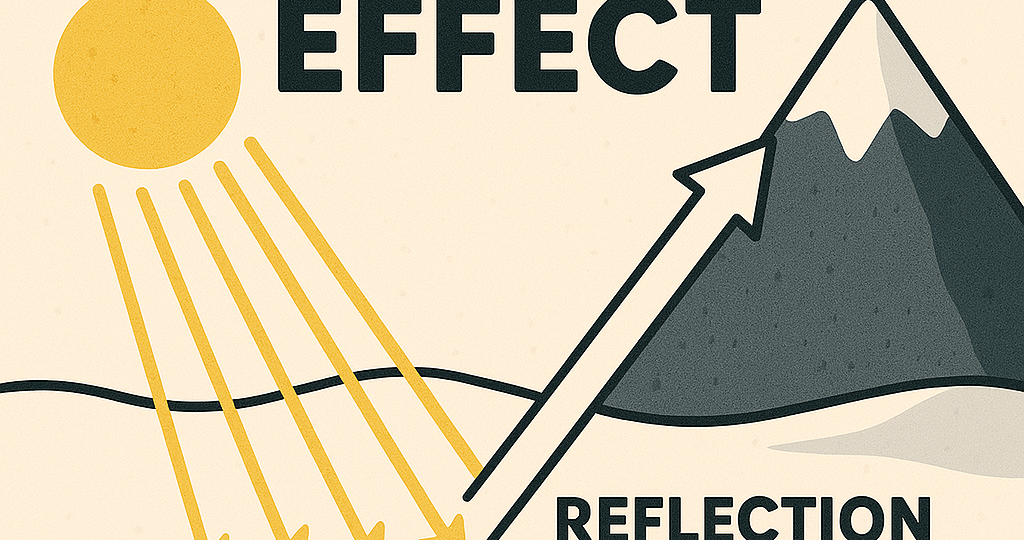
Have you ever noticed how wearing a black T-shirt on a sunny day makes you feel hotter than wearing a white one? That’s because lighter colors reflect more sunlight, while darker colors absorb it. This same principle applies to our entire planet — and it’s called the Albedo Effect. In simple terms, albedo measures how much sunlight a surface reflects. The higher the albedo, the more sunlight bounces back into space instead of heating the Earth.
Surfaces like ice, snow, and light-colored sand have a high albedo, meaning they reflect most of the sunlight that hits them. Darker surfaces, like oceans, forests, or asphalt, have a low albedo and absorb more heat. This has huge implications for climate change. As polar ice melts due to rising temperatures, it exposes darker ocean water, which absorbs more heat — warming the planet even faster. This creates a feedback loop that scientists worry could accelerate global warming.
The Albedo Effect plays a role not just in global systems, but in local environments too. Urban areas with dark roofs and roads absorb more heat, leading to what’s known as the urban heat island effect — cities being significantly warmer than surrounding rural areas. That’s why there’s growing interest in “cool roofs” and reflective materials that can lower temperatures and reduce the need for air conditioning.
Understanding the Albedo Effect helps us see how small changes — like losing a glacier or painting a roof white — can have a big impact on how the Earth handles sunlight and heat. It’s a powerful reminder that when it comes to climate, color really does matter.
RELATED POSTS
View all


